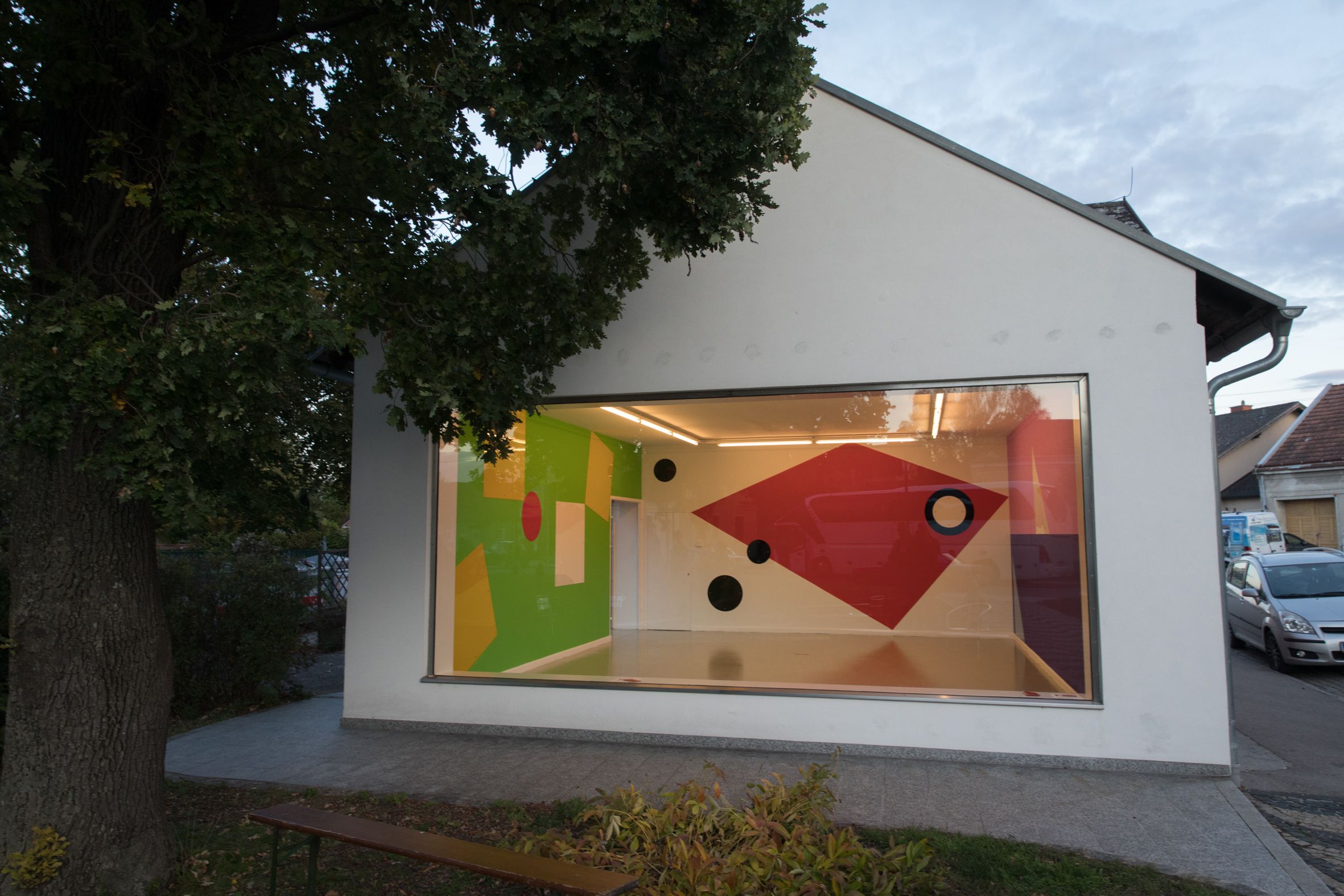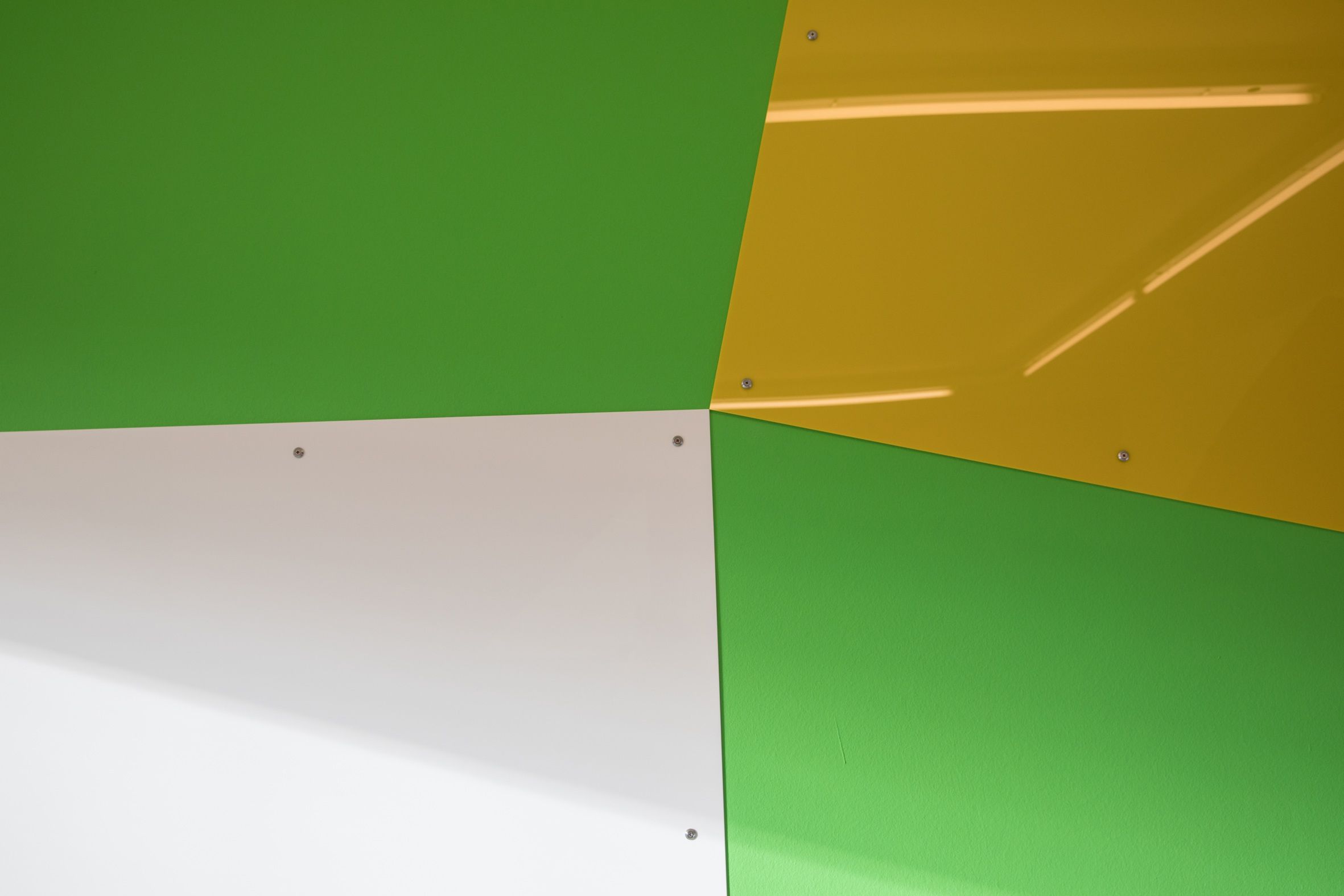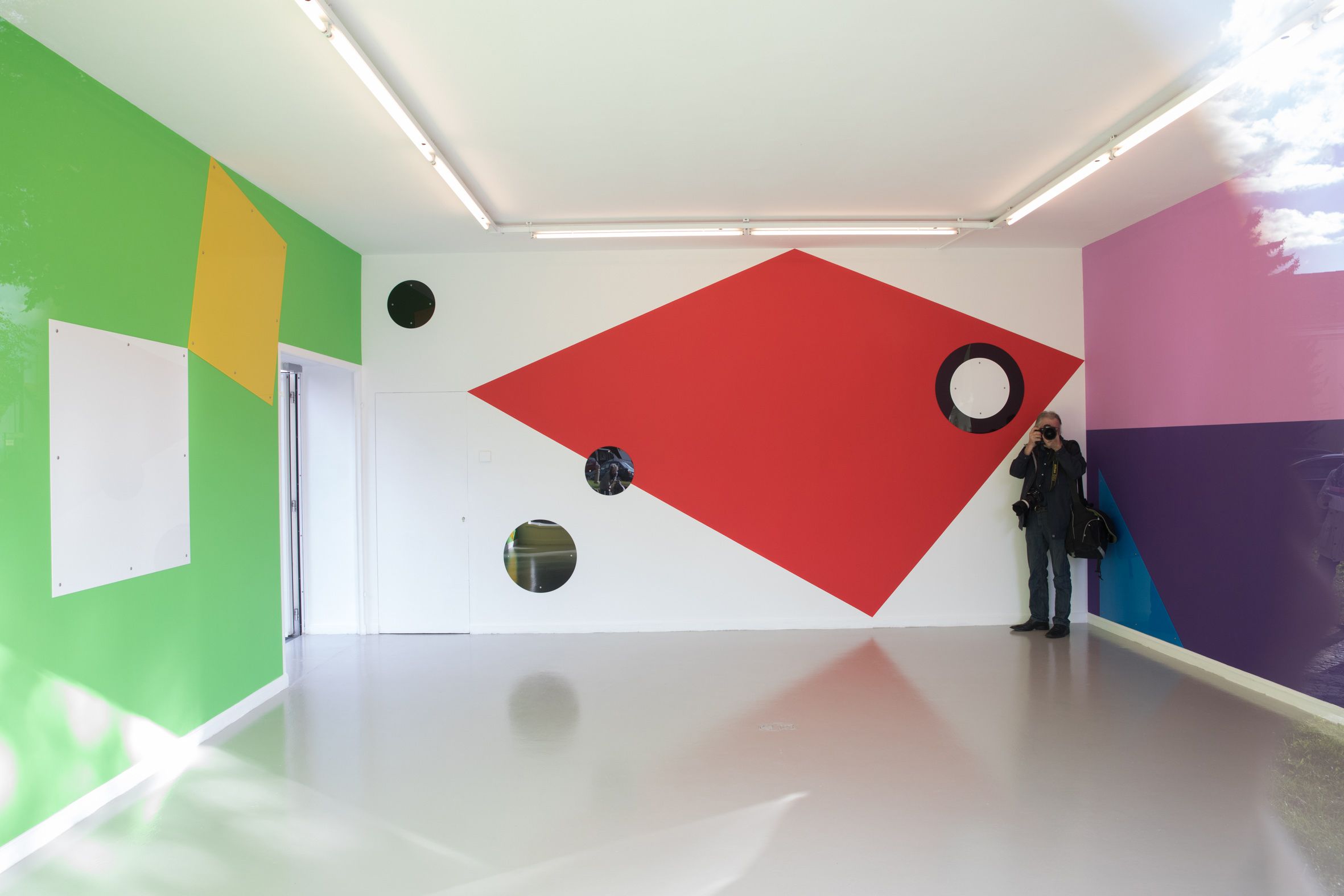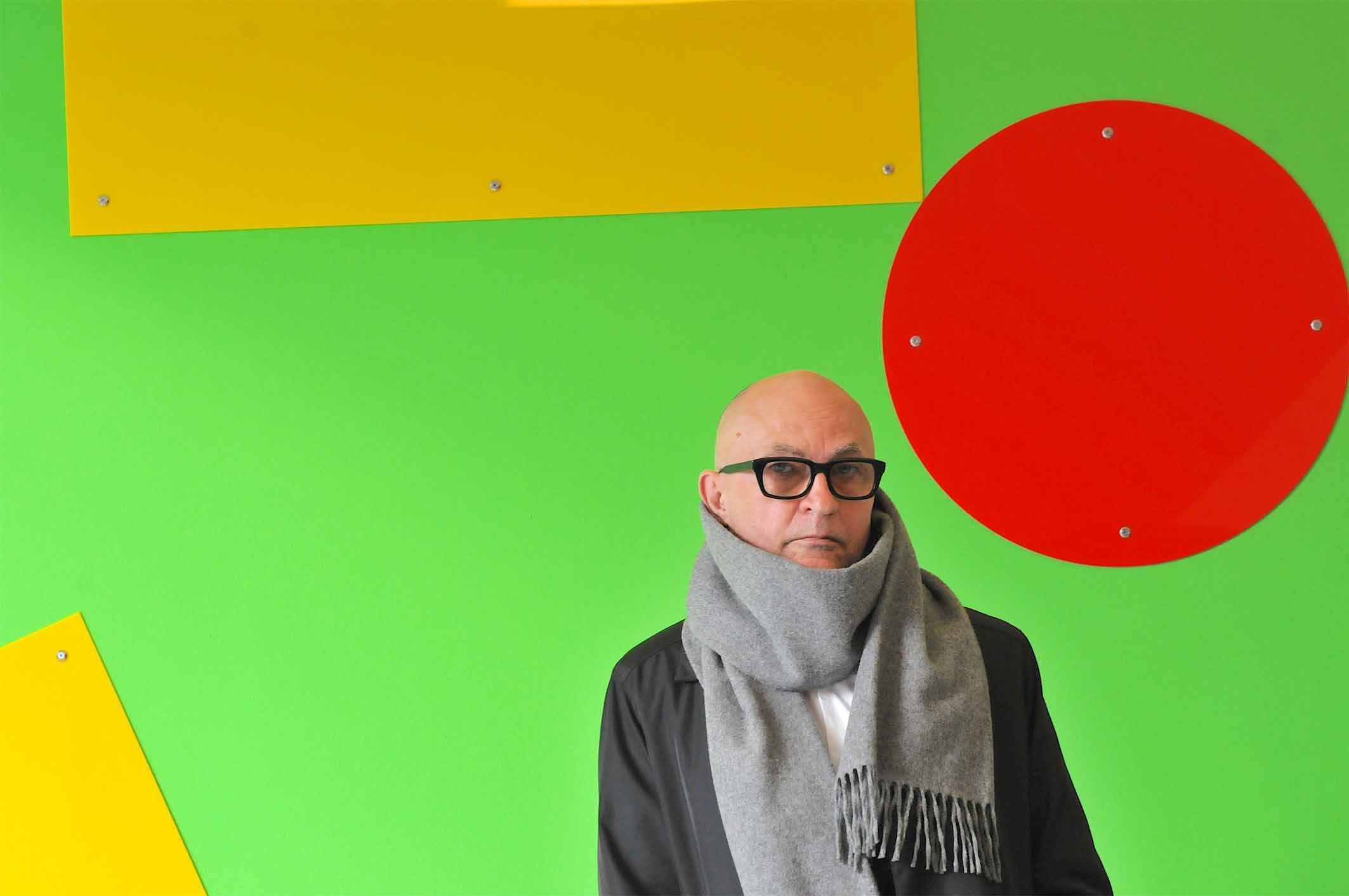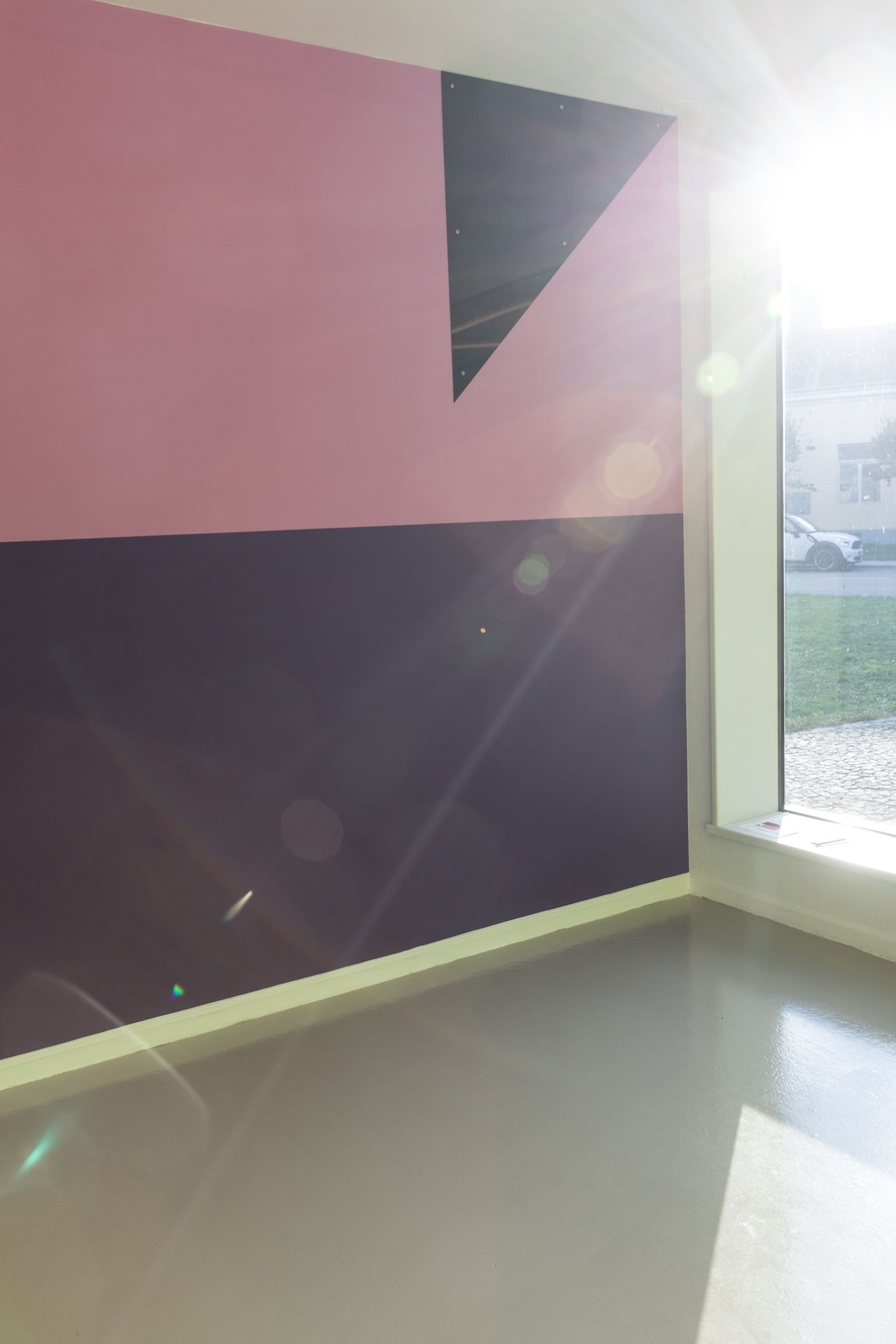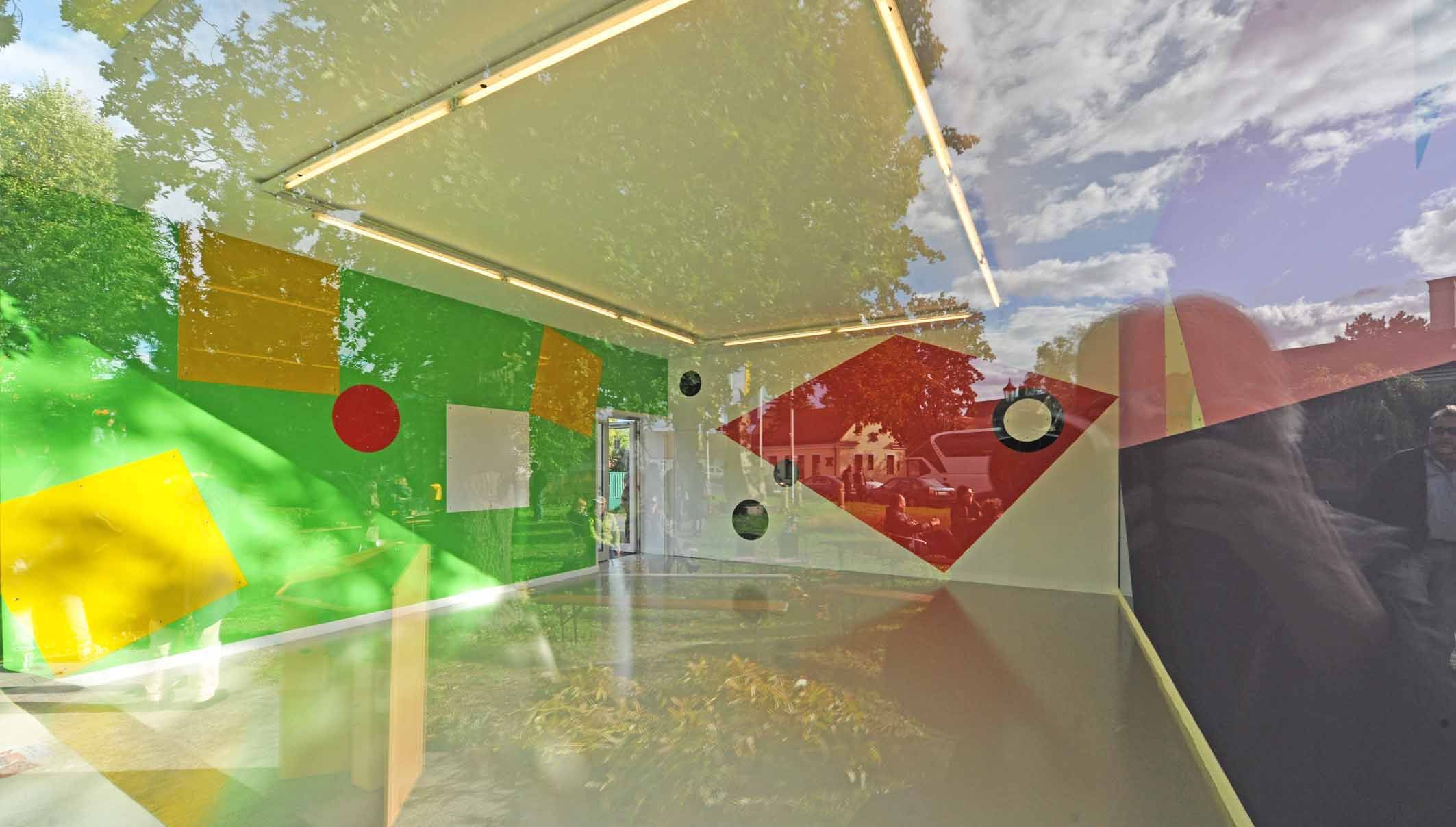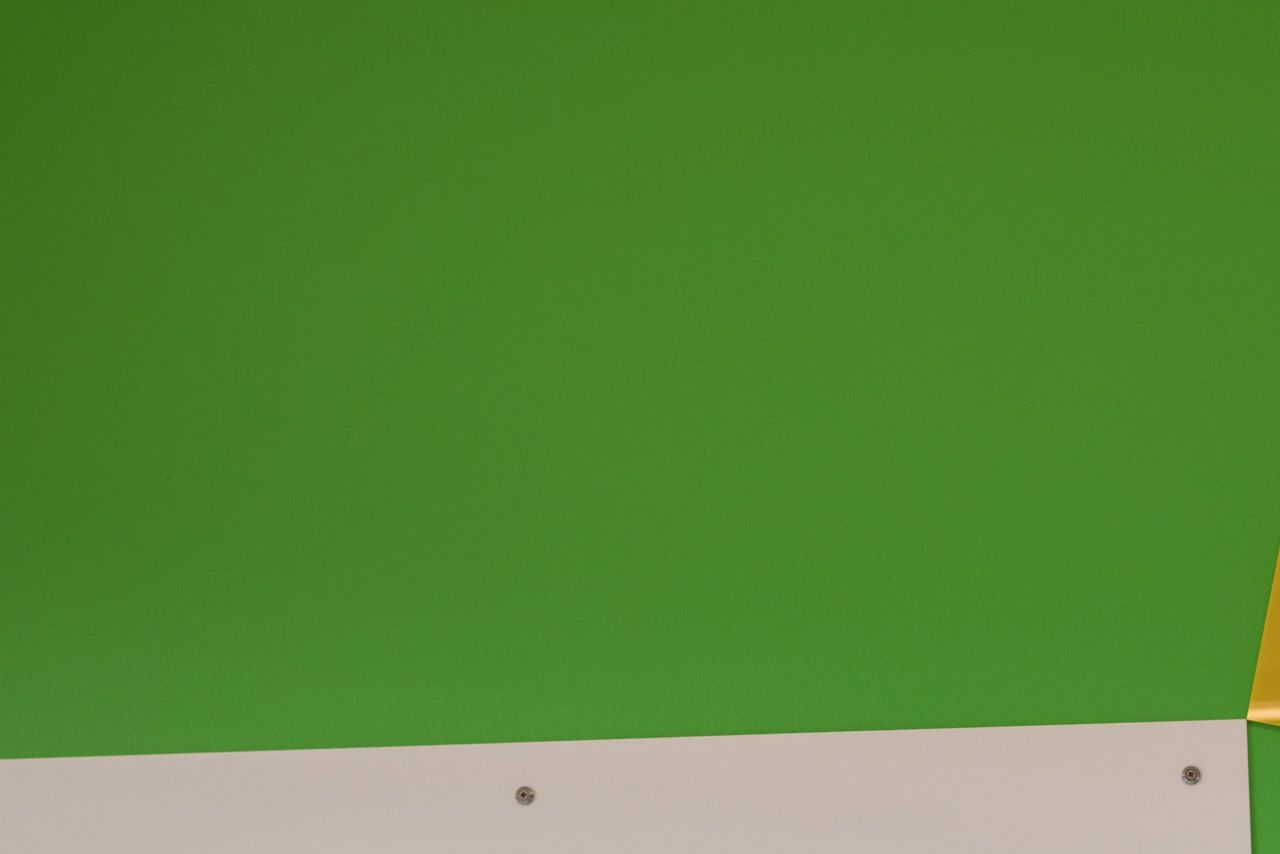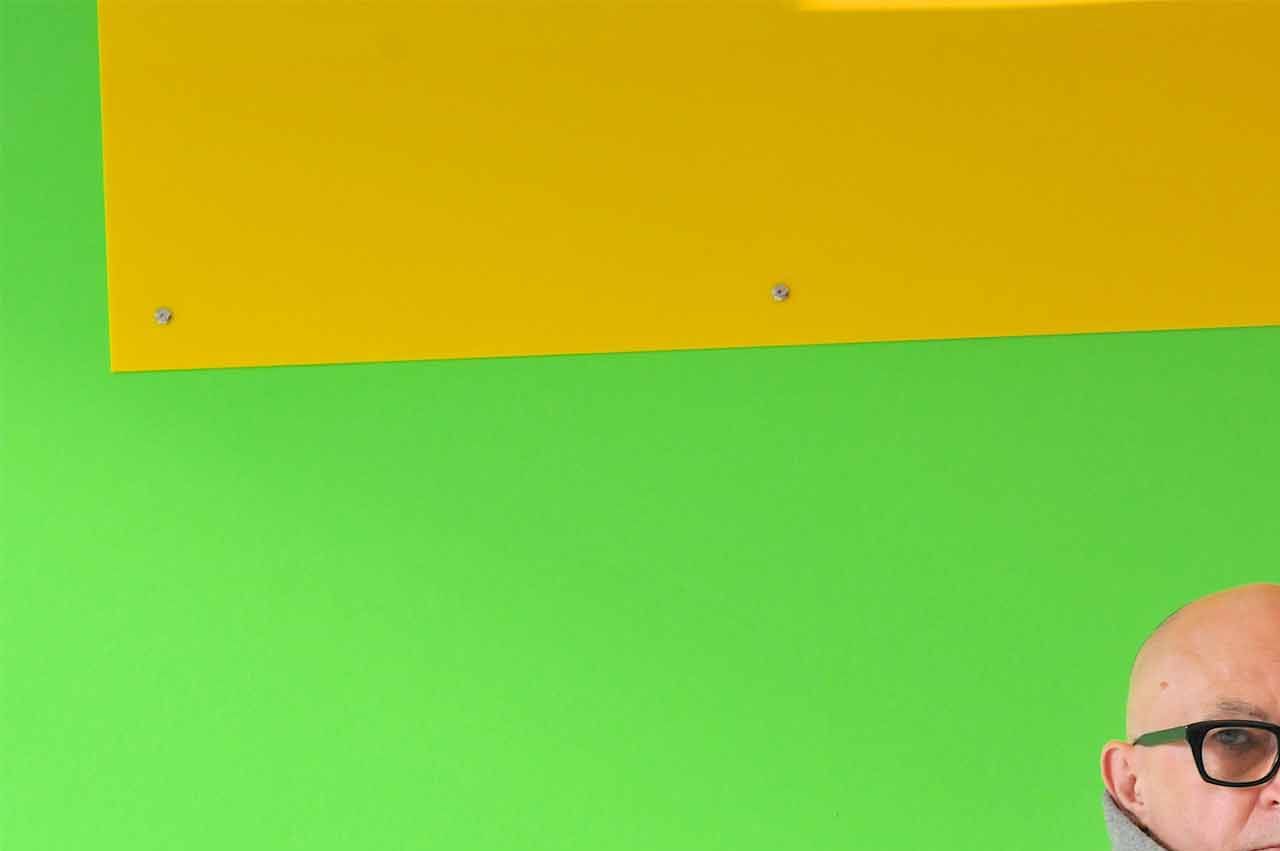Gerwald Rockenschaub
:
Flamboyant / So (Minimal Edit)
Back
Information
After remodeling an old fire station and turning it into an exhibition space for contemporary art, Michael Kienzer and a local Jury invited artists to create temporary installations that would last half a year and would also be visible from the outside through a large window. He thus transformed the entire building into a sculpture in public space.
With flamboyant / so (minimal edit) , Gerwald Rockenschaub has transformed the Kunstraum Weikendorf into a comprehensive wall installation that is extensive, modernist, and urban. Rockenschaub’s site-specific work acknowledges the Kunstraum’s architectural limits, while also categorically understanding the space as an intrinsic picture support. The dramaturgic and choreographed rhythm of colorful forms and planes resembles a kind of musical composition in which the painterly aspect completely monopolizes the architectural. Rockenschaub thus structures the walls not only with color fields, he also adds discs of opaque Plexiglas to them. Rockenschaub’s strict reduction to a repertoire of minimalist and geometric forms, his use of decidedly industrial materials and artificially brilliant colors, and his reliance on a composition that is clearly computer generated are all factors that make the work oscillate between figuration and abstraction, spatial reality and essential digitality, while remaining in an ambivalent state in which such irreconcilable contradictions seem possible. The relationship between figure and ground, painting and space have been meticulously planned, applied with rigor to the specific situation in the Kunstraum Weikendorf and condensed into a dialectic system. The obvious montage of the shiny Plexiglas objects adds a tactile aspect that enhances the dynamics already suggested by their forms and opens up new ways of experiencing the work. Gerwald Rockenschaub’s “funky minimal” style ( F unky Minimal was the title of an exhibition by Gerwald Rockenschaub in the Kunstverein Hamburg in 1998), which reveals phenomena from the world of popular culture, design, media, and everyday life that are sometimes reminiscent of the techno and electronic music scene , adds a familiar aspect to the work’s otherwise strict formalism, letting it unfold its effect not only on an intellectual level, but also in terms of immediate perceptual appearance.
(Margareta Sandhofer)

